1993 Toyota 4Runner Repair, Service & Tires
Get Started
Complete Auto Care for Your 1993 Toyota 4Runner
-
TIRES FOR YOUR 1993 Toyota 4Runner View Tire Info GET TIRE PRICING
-
REPAIR FOR YOUR 1993 Toyota 4Runner View Repair Info SCHEDULE REPAIR
-
MAINTENANCE FOR YOUR 1993 Toyota 4Runner View Maintenance Info SCHEDULE MAINTENANCE
-
OFFERS FOR YOUR 1993 Toyota 4Runner Limited Time Tire Offers VIEW ALL COUPONS
1993 Toyota 4Runner Tires
Recommended Tires | Tire Information
1993 Toyota 4Runner Tires Sizes, Speed Ratings, and Inflation
Not sure about your 1993 Toyota 4Runner tire size? Use the following chart to find information on tire size, speed rating, and inflation.
| Trim Level | Speed Rating | Inflation in PSI F/R | Tire Size |
|---|---|---|---|
| 1993 Toyota 4Runner SR5* | None | 29 PSI/29 PSI | 31x10.50R15LT/C |
| 1993 Toyota 4Runner SR5* | None | 26 PSI/29 PSI | P225/75R15 |
|
1993 Toyota 4Runner SR5* Speed Rating: None Inflation F/R: 29 PSI/29 PSI |
|
1993 Toyota 4Runner SR5* Speed Rating: None Inflation F/R: 26 PSI/29 PSI |
* Note: these models have different tire sizes depending on vehicle options.
Recommended Tires for Your 1993 Toyota 4Runner
What tires are best for a 1993 Toyota 4Runner? Check out the following tire brands and types.
 Destination LE3
Destination LE3
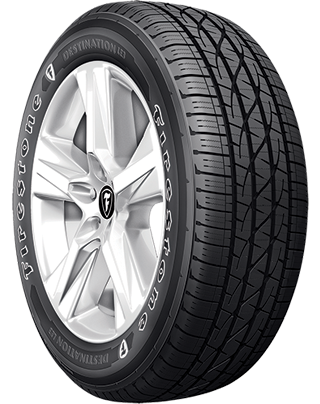
- No warranty
- All-Season
- Light Truck Tires
 Destination M/T2
Destination M/T2
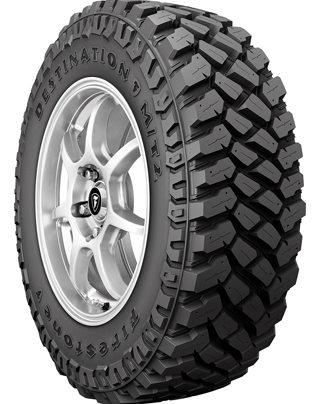
- No warranty
- All-Season
- Light Truck Tires
 Destination X/T
Destination X/T
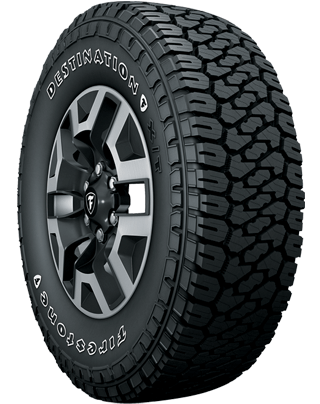
- Gold Pledge Limited Warranty
- All-Season
- Light Truck Tires
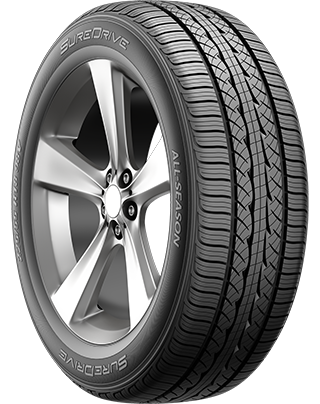
- No warranty
- All-Season
- Passenger Tires
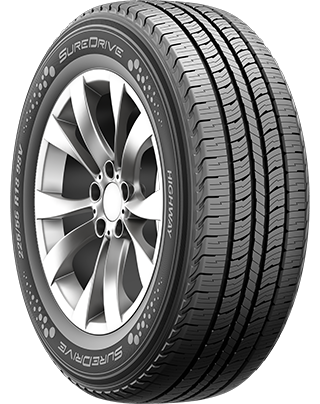
- No warranty
- All-Season
- Light Truck Tires
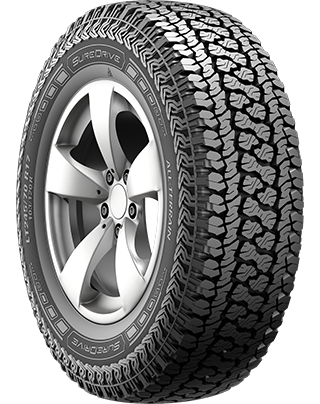
- No warranty
- All-Season
- Light Truck Tires
 Extensa A/S II
Extensa A/S II
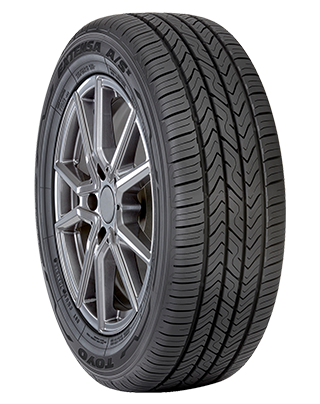
- No warranty
- All-Season
- Passenger Tires
 OPEN COUNTRY A/T III
OPEN COUNTRY A/T III
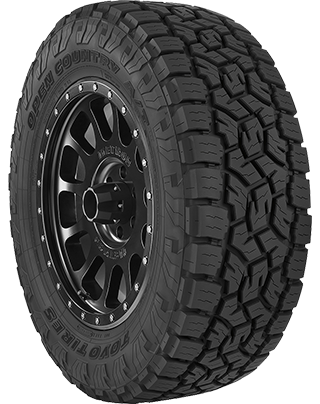
- No warranty
- All-Season
- Light Truck Tires
 OPEN COUNTRY M/T
OPEN COUNTRY M/T
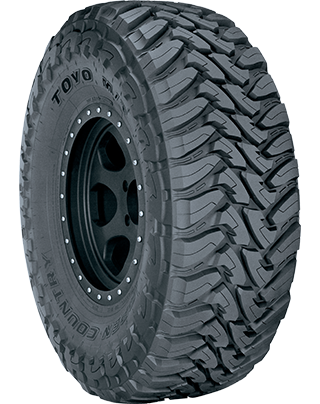
- No warranty
- All-Season
- Light Truck Tires
 OPEN COUNTRY R/T
OPEN COUNTRY R/T
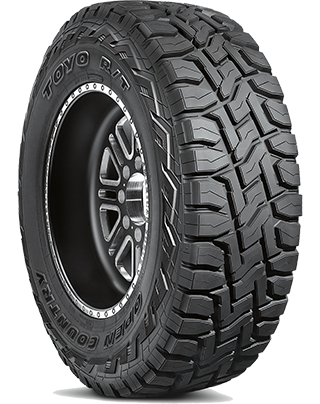
- No warranty
- All-Season
- Light Truck Tires
1993 Toyota 4Runner Tire Information
Other than getting the proper tire size, you also want to consider a handful of other factors when buying new Toyota 4Runner tires like which tire brands you like most and where you drive. When thinking about your driving conditions, consider where you live (mountains vs. city vs. countryside) and the kind of weather can catch you off-guard. (Watch out Tornado Alley!) It's not uncommon for drivers in states that experience all four seasons to buy more than one set of tires. one for winter and one for summer. Other drivers prefer the convenience of all-season tires. They make one trip to the tire shop and they're pretty much ready for rain, light snow, or sun!
Next, consider your driving style. If you're a diehard off-roader, you have very different tire needs than a highway commuter who doesn't leave the paved path. Visit your local Firestone Complete Auto Care for help selecting the tire that's right for you, or get started by browsing tires that fit your Toyota 4Runner.
1993 Toyota 4Runner Tire Installation & Rotation
Firestone Complete Auto Care has been a leading tire provider for more than a century. We're your tire shop and a complete service center for tire installation, maintenance, repair, rotation, and alignment! We make it easy to buy new 1993 Toyota 4Runner tires online and book an installation appointment at the same time.
Questions About 1993 Toyota 4Runner Tires
-
Why does Toyota tire inflation matter? Even a tiny decrease in tire pressure could impact your safety and fuel economy. Maintaining proper tire pressure can help increase fuel economy, improve braking time, and boost tire lifespan.
-
What do the numbers on my Toyota 4Runner tires mean? Your tire sidewall numbers tell you the recommended load carrying capacity, speed rating, treadwear, traction, and tire size. Talk to a tire technician to learn how to read Toyota tire numbers.
-
Is there an easy way to check Toyota tire tread depth? Stay on top of your tire tread depth to help avoid a dangerous drive. You can check tread depth with a penny. Hold the penny so that Abraham Lincoln is facing you, then place your penny into a tread groove upside down. If you can see the top of Abe’s head, your tread is shallow and it might be time for new Toyota 4Runner tires. Grab a penny. Hold the so that Abe Lincon's head is facing you and his hair is pointing toward the ground. Then, place the penny into a tread groove. If you can see the top of Abe’s head, your tread is shallow and it might be time for new Toyota 4Runner tires.
Repair Services for Your 1993 Toyota 4Runner
How do I learn more about auto repairs? Click on a service below to read about the types of Toyota 4Runner repairs we do at Firestone Complete Auto Care.
1993 Toyota 4Runner Repair Information
For most drivers, the words “car repair” don’t exactly spark excitement. But we work to provide you with a different experience at Firestone Complete Auto Care. When it’s time for 1993 Toyota 4Runner repair services, head to your nearest Firestone location and our technicians will take care of your 4Runner like it was their own. We’ll start by assessing what repairs may be needed, and we’ll provide you with a detailed explanation of what we recommend. If a repair isn't necessary, we won't recommend it.
How Much Are Toyota 4Runner Repairs?
Several factors can affect the cost to repair your 1993 Toyota 4Runner, including what kind of repair you need, the cost of any replacement parts, how much labor the repair will take, and where you live. But no matter your location, you may be able to save money with one of our many auto repair coupons or offers.
A few different aspects can influence repair costs for your 1993 Toyota 4Runner, like
1993 Toyota 4Runner Auto Repair Q&A
-
Do I need to follow Toyota's maintenance schedule? One of the best ways to prevent 1993 Toyota 4Runner repairs is by staying on top of your Toyota maintenance schedule. This schedule is written by the people who made your vehicle and they know best how to keep it running smoothly.
-
What does it mean to be 'in tune' with your car? You know your vehicle. You also know when something feels 'off' with your vehicle. Pay attention when things don't run like they used to and stop by for a Courtesy Check when you notice an unusual sign, smell, or sensation. We might be able to help you prevent Toyota 4Runner repairs!
-
Are the repairs you recommend for my Toyota actually needed? Talk to your technician. We'll never recommend a service or repair for your 1993 Toyota 4Runner that we don't think is necessary for your safety.
Brake Repair for Your 1993 Toyota 4Runner
Your Toyota 4Runner may be powered by a strong engine. But if you can't stop it, then it's scrap metal. Don't wait if you're experiencing brake squeaks or a loss of braking power. Unresponsive brakes make it tough to give the road your best. Plus, ignoring your brake problems can result in more damage and higher brake repair bills. Go to your local Firestone Complete Auto Care for 1993 Toyota 4Runner brake repairs. We offer a variety of brake services like brake pad/shoe removal and replacement, brake rotor/drum resurfacing, brake fluid exchange, and brake caliper and wheel cylinder service.
Toyota 4Runner Brakes Frequently Asked Questions
-
Why is my 4Runner shaking as I brake? Your 4Runner could shake when you brake due to worn brake pads or rotors, warped rotors, loose or worn suspension components, or faulty brake calipers. You can always schedule a free brake inspection at the first sign of strange brake behavior.
-
How long should my 4Runner brake pads last? Brake pads typically last about 30,000 to 40,000 miles. However, driving conditions can affect this range. Sticking to highway driving and braking smoothly can help extend the life of your brake pads, while towing heavy loads or frequently riding your brakes can shorten it.
-
Can brake fluid leak when my 4Runner is off? Your 4Runner brake system is a closed hydraulic system, which means that the brake fluid should not leak out of the system under normal circumstances. However, over time, the various components of the brake system can wear out or become damaged, which can cause brake fluid to leak out of the system.
1993 Toyota 4Runner Drivetrain Repairs
You don't want to go to just anyone for drivetrain repair. Drivetrains for front, rear, and all-wheel-drive and 4WD vehicles are all different. You want to go to Firestone Complete Auto Care. We can fix many 1993 Toyota 4Runner drivetrain components Your Toyota could be crying out for driveshaft repair if you notice vibration as your vehicle accelerates, clunks when shifting, heavy vibrations in your floorboards, or resistance when turning.
1993 Toyota 4Runner Drivetrain Questions
-
What are the symptoms of a damaged Toyota drivetrain system? Your Toyota 4Runner drivetrain might be damaged if you notice strange noises from the rear of your vehicle, see fluid leaking, or have issues turning.
-
Why is my 4Runner malfunction indicator light (MIL) on? The malfunction indicator light — also known as the check engine light — on your 4Runner can illuminate for a variety of reasons, including engine issues, electrical problems, damaged sensors, transmission problems, misfires, and faulty connections.
-
Is a drivetrain malfunction in my 4Runner serious? If you experience a drivetrain malfunction in your 4Runner, it is important to have it inspected by a professional mechanic as soon as possible to identify the underlying cause and perform the necessary repairs. Driving with a malfunctioning drivetrain can be dangerous and cause further damage to your car.
1993 Toyota 4Runner Alignment Services
An alignment involves making adjustments to your Toyota 4Runner's suspension system, the connection between the vehicle and the wheels. In an alignment service, calculated changes are made to the angles of your tires. This is so that your tires hit the road at an optimal angle for your vehicle’s performance — just as Toyota intended. When you bring in your 1993 Toyota 4Runner, we’ll perform an alignment check first. If needed, we'll adjust your wheel alignment angles to match Toyota recommendations.
Answers to Toyota 4Runner Alignment Questions
-
How can I avoid knocking my Toyota 4Runner out of alignment? Hitting a pothole or curb can alter your wheel alignment. So can general wear and tear over time.
-
When should you get a wheel alignment for your 4Runner? Check your 4Runner owner's manual for Toyota's recommended interval. It's generally a good idea to check your alignment every 6,000 miles or 6 months, depending on which comes first.
-
Does getting new 4Runner tires mean you need an alignment? It’s likely not a requirement to get an alignment when you install new tires on your 4Runner, but it's a smart idea to do so anyway. An alignment can help ensure even tire wear, smooth handling, and better fuel efficiency.
Engine Repairs for Your 1993 Toyota 4Runner
When your Toyota 4Runner engine needs repairs, our technicians will provide you with a thorough explanation beforehand. We make recommendations, but you make the final decision. If a service can wait, we’ll make sure you know. But if immediate repairs are necessary for your safety, we’ll make sure that's clear, too. We seek to give you all the info you need to make a smart decision about our services. By choosing Firestone Complete Auto Care for 4Runner engine repairs and you can feel good knowing that we only use Toyota-compliant replacement parts such as the timing belt, valve guide seal, sensors, or other parts.
Engine Q&A 1993 Toyota 4Runner
-
Why does the check engine light in my 4Runner turn on when I start my car? It’s usually normal for your check engine light to turn on upon ignition. This is just your 4Runner testing its circuits. The dash light shouldn't stay on. If it does, you might want to bring your vehicle in for service.
-
Are Toyota 4Runner engine noises bad? Unusual noises can signal a problem with your Toyota 4Runner engine. Tapping or knocking could mean you're low on oil. Whistling could mean a belt is misaligned or there's an intake leak. Squealing can indicate a loose fan belt, and grinding might be coming from the brakes, not the engine.
-
Are you unknowingly damaging your Toyota 4Runner engine? Certain driving habits can hurt your engine. These habits include driving on an empty fuel tank, revving your engine while the vehicle is in Park, or slamming the gas pedal while the engine is still cold. Steer clear of these habits to help protect engine performance and efficiency.
1993 Toyota 4Runner Tire Repair
If the road has been rough on your 1993 Toyota 4Runner tires, Firestone Complete Auto Care can help. There’s a chance your tire could be plugged and patched (rather than replaced). Our technicians can inspect your tire and let you know if it is safe to repair. We’ll begin by taking a look at where the damage is, the type and extent of the tire damage, and how all of your tires are wearing.
If a repair on your 1993 Toyota 4Runner tire is feasible and safe, we’ll get to work on the steps to fix it: (1) Separate the tire from the vehicle wheel, (2) fill in the area that’s been punctured to prevent damage from moisture, and (3) seal the inner liner with a repair unit to prevent air loss.
Toyota 4Runner Tire Repair Questions
-
Can I drive my Toyota on a flat tire? Driving on a flat tire is not a good idea. Your 4Runner engine will keep running with a flat tire, but you could damage your wheel by continuing to drive on a flat.
-
Will a temporary sealant fix my Toyota's flat tire? A temporary sealant may be able to help you get to a repair location safely. But temporary or emergency sealants could possibly damage TPMS sensors, and in some cases may even void the warranty on your Bridgestone or Firestone tires. If your tire needs extensive repair, sealant can add time and labor costs to the process.
-
Why do the tires on my 4Runner keep losing air? Possible reasons for your 4Runner tires continuously losing air include a leaking valve steam, wheel damage, and a puncture or hole in the rubber.
Maintenance for Your 1993 Toyota 4Runner
Take care of your Toyota 4Runner and it'll take care of you. With the right maintenance at the right time, your 4Runner has a good chance of hitting 200,000 miles or more.
Guide to 1993 Toyota 4Runner Scheduled Maintenance
There's no need to guess when it's time to get 4Runner maintenance, and no need to wait until something goes wrong. Just follow your 1993 Toyota 4Runner maintenance schedule! The recommended maintenance schedule is put together by Toyota, your vehicle manufacturer. Scheduled maintenance services can vary depending on driving conditions, climate, and other factors; however, recommended maintenance usually includes services like oil changes, tire rotations, brake pad replacement, filter changes, and fluid checks and exchanges. Staying on track with routine service appointments can help your 4Runner perform better, keep you safer on the road, and help you avoid expensive repairs caused by 1993 Toyota 4Runner problems later.
Overview of Essential Toyota 4Runner Maintenance Needs
Bring your 1993 Toyota 4Runner to Firestone Complete Auto Care for factory-recommended maintenance services and a skilled technician will start the appointment with a Courtesy Check. The Courtesy Check helps us see what we’re working with under the hood, and allows us to alert you to any potential problems before they worsen. Every Courtesy Check will include a visual inspection of your 4Runner. We’ll check your head and tail lights, fluid levels, filters, tires (and their alignment!), and windshield wiper blades. We’ll also perform a free battery check to determine your battery’s charge level.
Firestone Complete Auto Care is the place to go for 1993 Toyota 4Runner maintenance. So visit us regularly, or visit us urgently. Many locations are open on weekends and in the evening.
1993 Toyota 4Runner Maintenance Q&A
-
What should I do after hitting a pothole in my Toyota 4Runner? Watch out for pothole damage. If your 1993 4Runner is pulling to one side or the other, your tires or suspension system could be calling out for help.
-
When does my Toyota 4Runner need high mileage oil? If your Toyota 4Runner has ticked past 75,000 miles, consider switching to high mileage oil at your next oil change to give your engine what it needs to go another 75,000 (or more!). High mileage oil: make it a high priority!
-
Can Toyota dashboard warning lights wait? Because there might be a problem under the hood. Those warning lights are there for a reason! As soon as you notice that one’s illuminated, take your Toyota 4Runner to Firestone Complete Auto Care so you can address any small problems long before they worsen.
1993 Toyota 4Runner Battery Replacement & Size
Researching battery replacements for your Toyota 4Runner?
| Battery | Engine | Warranty | Cold Cranking Amps | |
|---|---|---|---|---|
| 25-1 | L4/2.4L | Replacement 24 months | Performance months | 550 |
| 34/78-4 | V6/3.0L | Replacement 24 months | Performance months | 800 |
1993 Toyota 4Runner Batteries
Generally, car batteries last from three to five years. Don’t get stranded by your 4Runner’s car battery. Replace it regularly instead! Watch for signs that your current battery is getting too old or too weak. A lagging starter, a blinking battery or check engine light, bloated battery case, corroded battery terminals, or faded headlights can all signal that your battery needs attention.
You can also get a Free Battery Test at your local Firestone Complete Auto Care. Stop by for a free battery test and, if needed, a replacement battery for your 1993 Toyota 4Runner. Car batteries are only one of our many strong suits. Our expert technicians understand Toyota service recommendations for 4Runner battery CCAs and reserve capacity. Get help figuring out the battery size that fits your car perfectly, and schedule a weekday or weekend battery replacement service for your car.
Top Toyota 4RunnerCar Battery Questions
-
Why doesn’t my Toyota 4Runner battery stay charged? A battery is in its final hour when it will no longer hold a charge. The battery may be too old. Or, you may have been leaving your car doors ajar and the cabin light at night. Stop by for a complimentary battery check at your favorite Firestone Complete Auto Care and get a handle on your car battery’s health.
-
What is the average lifespan of a car battery? Car battery lifespan varies depending on a few factors, including driving conditions, accessories, how well it’s maintained, and the type of battery. On average, a car battery lasts about three to five years.
-
Why is there white, crusty buildup on my 4Runner’s battery post? The white, crusty stuff that can accumulate around 4Runner car battery terminals is called corrosion. It is caused by a chemical reaction between the battery acid and the air, which creates a white, powdery substance that can build up on the terminals over time. Corrosion can interfere with the flow of electricity between the battery post and the car's electrical system, sometimes leading to poor electrical performance, difficulty starting, and even premature battery failure.
1993 Toyota 4Runner Oil Change Service
Your 1993 4Runner’s oil should be changed according to Toyota’s recommended oil change intervals. No matter the mileage, your 4Runner may need its oil changed ASAP if your check engine light is on, you hear knock knock knock coming from the engine, smell oil inside the vehicle, or notice an unusual amount of exhaust. You might need an oil change more frequently than what’s recommended by Toyota if you regularly haul heavy loads, drive in dusty terrain, go off-roading a lot, or drive at low speeds for long distances.
Whether you need high mileage oil, synthetic oil, or conventional oil, you'll find the right 1993 Toyota 4Runner motor oil at Firestone Complete Auto Care. Talk with a teammate and consult your owner's manual before picking a motor oil. At Firestone Complete Auto Care, you can choose from the following oils: Quaker State® Advanced Durability™ conventional oil, Pennzoil® High Mileage Vehicle® motor oil, Pennzoil Platinum® Full Synthetic motor oil with PurePlus™ Technology, and Shell Rotella® heavy-duty engine oil. In an oil change service, an auto technician will change your 4Runner’s oil, replace and recycle the old oil and filter, check all of your other filters, top-off important fluids, and perform a courtesy inspection on your entire vehicle. Get professional engine care by making an oil change appointment for your 4Runner today.
Oil Change Q&A for Your 1993 Toyota 4Runner
-
What does it mean if my Toyota 4Runner oil light comes on? Your Toyota 4Runner oil change reminder light may come on if you're overdue for an oil change. The oil pressure light will typically come on if the oil level in the engine is too low, the oil pump is failing, you have a clogged oil filter, or there's a faulty oil pressure sensor.
-
How hard is it to change Toyota 4Runner oil at home? First off, changing your own oil isn’t as easy as you’d think. You’ll have to buy special tools and figure out a way to recycle the old oil properly. Getting a professional oil change reduces the risk of something going wrong during the service, but also helps your car perform down the road.
-
Why is my Toyota 4Runner exhaust smoke grayish or blue? Your engine could be burning oil due to a leak. It may be time for a pro to take a look. A leak can be caused by a variety of issues including faulty valve seals, blown piston rings, or damaged cylinder walls.
1993 Toyota 4Runner Engine Tune-Ups & Maintenance
Routine engine tune-ups can bring power back to your 4Runner. Your nearest Firestone Complete Auto Care location has several options to choose from when it comes to Toyota 4Runner engine tune-up services. The first is the standard Firestone Tune-Up. This includes the installation of new spark plugs and a visual inspection of your engine’s components, plus a lifetime warranty on parts*. The second service focuses on your 4Runner's filters, specifically replacing the air filter and fuel filter. The third tune-up option is a fuel system cleaning service, which is a three-step process that removes varnish, dirt, and carbon deposits on your 4Runner's fuel injectors, throttle body, and throttle plate. The result? Restored fuel system performance. Here’s something to remember when choosing services: the mileage and service history of your 4Runner can determine what kind of service it needs. Ask one of our technicians what your vehicle needs, based on your driving habits and your car’s current condition.
*Check with a teammate at Firestone Complete Auto Care for complete terms and conditions regarding warranties.
Common Engine Tune-Up Q&A for 1993 Toyota 4Runner
-
Will it hurt my Toyota 4Runner to drive with old spark plugs? When it’s time to replace the spark plugs, don’t delay. These small (but vital!) parts provide the electric spark that your car needs in order to start, and old spark plugs can prevent your car from starting at all. Replace spark plugs on time or about every 30,000 miles or so.
-
What should I do if I see leaks under my 4Runner? Puddles could indicate an oil leak, coolant leak, or brake fluid leak– all of which can critically hurt your engine. Have your engine inspected as soon as you spot a pool of liquid in your usual parking spot.
-
How often should I clean my Toyota 4Runner fuel injectors? There is no hard and fast rule on how often fuel injectors should be cleaned, and it can vary based on driving habits and fuel type. Some manufacturers may suggest including a fuel system cleaning in your regular maintenance schedule. Or you may need to clean your fuel injectors as needed if you notice signs of a fuel system problem.
Suspension Service & Repair for 1993 Toyota 4Runner
When you first drove your 1993 Toyota 4Runner, you and your passengers probably enjoyed a ride that was smooth and balanced. But these days, things are starting to feel a bit rough. Maybe your 4Runner bounces, sways to one side, or makes noise whenever you turn or drive over a speed bump. The first sign of trouble is the best time to bring your 1993 Toyota 4Runner in for steering and suspension services. We’ll get to the source of your car problems and, if your 4Runner suspension system needs repair, we'll explain all of your options and the potential cost.
1993 Toyota 4Runner Steering & Suspension Questions
-
Why is my Toyota 4Runner bouncing excessively? Damaged struts or shocks can't dampen road bumps properly, causing your vehicle to feel like a trampoline after each dip or bump.
-
Why does my 4Runner front end dip forward when I brake? When you brake, the forward momentum combined with your vehicle's weight sends a lot of force to the vehicle's front end. A bad suspension can cause all that weight and force to push the front end downward.
-
Does tire pressure and tread depth impact my Toyota's suspension? Proper tire care can reduce strain on the suspension system, and also alert you to the need for new tires. Uneven tire wear is one sign of steering and suspension system problems, but it can also contribute to more.
A/C Service for Your 1993 Toyota 4Runner
Technicians at Firestone Complete Auto Care are ready to help you address your 1993 Toyota 4Runner A/C problems. In this A/C performance inspection, we’ll check out the current condition of your 1993 Toyota 4Runner A/C system to see if repair work is required. This check will include an examination of system pressure, a visual inspection, and a leak test.
When we perform an A/C repair on your 1993 Toyota 4Runner, we’ll also do an A/C evacuation and recharge. To start this process, a technician will flush out the old refrigerant from your vehicle’s A/C system. Next, they will evacuate the system according to Toyota's recommendations. The A/C system is recharged with new refrigerant.
1993 Toyota 4Runner A/C System FAQs
-
Why is my 4Runner A/C blowing hot air? An A/C blowing hot air has several possible root causes. There could be an issue with your compressor clutch, a blown fuse, a leak, or a clog in the expansion valve.
-
How does my A/C system get a leak? Over the years, the rubber seals and gaskets in your 4Runner’s A/C system naturally degrade. Moisture can get into the system and cause a malfunction, or parts can simply wear out so that your system no longer seals properly.
-
Why does my vehicle have to be moving for my 4Runner’s A/C to work? If your A/C only works when the vehicle is moving, there could be a problem with part of your 4Runner’s A/C or electrical system. Potential issues include low coolant or a faulty cooling fan.
1993 Toyota 4Runner Transmission Service & Repairs
The transmission delivers power from the engine to the wheels so that you can drive on your terms. Since the transmission has to translate the precise amount of power for your desired amount of speed, a tiny transmission issue can take a major toll on your car’s performance. 1993 Toyota 4Runner transmission problems can show up as shifting delays, grinding when accelerating, a feeling of shakiness, or a burning smell or whistling sounds coming from under the hood. If you ignore Toyota 4Runner transmission issues your could suffer a loss in fuel efficiency or find that you can't drive your 4Runner at all. Our technicians know how to service your 1993 4Runner up to Toyota-recommended standards. If you think there’s something wrong with your 4Runner’s transmission, schedule an appointment at your local Firestone Complete Auto Care to help keep your Toyota running for miles and miles.
1993 Toyota 4Runner Transmission Q&A
-
When should I have my 4Runner's transmission fluid checked or exchanged? Regularly checking and exchanging your 1993 4Runner’s transmission fluid is one of the best ways to help the transmission system perform. Some technicians would say that between 30,000 and 60,000 miles is a good timeframe for having your Toyota's transmission fluid checked and replaced, but that timeline can vary depending on how your vehicle is used and your manufacturer’s recommendations. The good news is that transmission fluid leaks are affordable to repair and easy to spot.
-
Can transmission fluid leak from my Toyota 4Runner? Yes, your Toyota 4Runner can develop a transmission fluid leak. As your 4Runner ages, parts of the transmission system might wear out or break down, leading to a leak and possible transmission issues. Common causes of transmission fluid leaks include worn seals, a damaged transmission housing, a loose or cracked transmission pan, an overfilled transmission, or faulty transmission lines.
-
Can I drive my Toyota 4Runner with a transmission fluid leak? You should avoid driving with a transmission fluid leak. Your transmission system relies on transmission fluid to operate properly, and a leak may decrease performance, cause your 4Runner to overheat, or even lead to transmission failure.
1993 Toyota 4Runner Inspections
Every service performed at Firestone Complete Auto Care includes a multi-point Courtesy Check. The technician will begin by testing your Toyota 4Runner's battery to see how much charge it has left – and determine if it may fail in the near future. After we’ve inspected your Toyota 4Runner’s battery, we’ll visually inspect your windshield wiper blades, lights, filters, alignment, tires, hoses, belts and fluid levels.
While every visit to your local Firestone Complete Auto Care includes a Courtesy Check, you can also request a Complete Vehicle Inspection for your 1993 Toyota 4Runner if you suspect there may be a bigger problem. During a Complete Vehicle Inspection, we’ll visually check everything that’s on the list for a Courtesy Check. Additionally, we’ll perform a thorough manual inspection of your exhaust system, steering and suspension, and brakes. With this inspection, we want to help you stay on top of any issues that may need immediate attention in order to prevent further damage.
Depending on your location, you may be able to complete your vehicle’s safety tests or state inspection at your nearest Firestone Complete Auto Care. Specific requirements for these types of inspections vary by state.
Common 1993 Toyota 4Runner Vehicle Inspection Questions
-
How do I know if I should have an inspection on my Toyota 4Runner? If you’ve noticed something that doesn’t feel quite right in your car lately, a Courtesy Check could give you peace of mind. We can help you get to the bottom of strange engine noises, a jerky steering wheel, or an engine that's hard to start.
-
Can you fix my 1993 Toyota 4Runner so it will pass a state inspection test? There's a good chance we can. Stop by for a full system inspection and we'll get to the root of the issue.
-
When’s the best time to have a complete vehicle inspection performed on my Toyota 4Runner? It’s generally a good idea to get a complete vehicle inspection for your Toyota 4Runner before a road trip and/or when something strange occurs and you are unable to find the cause. Signs something is up include dashboard lights illuminating, odd noises coming from the engine, and your steering feeling loose or tight.
1993 Toyota 4Runner Radiator Service
Staying on top of routine radiator maintenance for your 1993 Toyota 4Runner is crucial to keep your engine in the best possible shape for years to come. To keep your radiator functioning, Toyota recommends replacing your antifreeze or coolant at scheduled intervals but it’s a good idea to keep your eyes open for any indication that your radiator is failing. Your radiator could be close to causing an engine breakdown if you see coolant leaks under your car, high engine temperatures, or a dashboard light that indicates low coolant.
If you bring your vehicle to Firestone Complete Auto Care, we start with a comprehensive inspection of your Toyota 4Runner’s cooling system. We’ll do a machine-powered coolant exchange on the system, and then we’ll top off or replace the fluids that were removed (like chemicals, lubricants, and sealants). Lastly, we’ll perform a pressure check to look for leaks. From the heater core to the radiator cap, we’re here to give your 1993 Toyota 4Runner the top-notch service it needs.
1993 Toyota 4Runner Radiator Q&A
-
Why is the coolant light on my Toyota dashboard on? Pay attention to the temperature gauge and lights on your dashboard. If a low coolant warning light comes on or your dashboard temperature gauge keeps rising, it’s likely that your engine is about to overheat (and could leave you stranded on the road). Wait for the engine to cool down, then have your coolant system checked immediately at your nearest Firestone Complete Auto Care.
-
What can cause my 4Runner to overheat? Low coolant, a damaged cooling fan, a faulty water pump, a malfunctioning thermostat, or a clogged radiator could all cause your Toyota 4Runner engine to overheat.
-
What is making my 4Runner radiator sound like it’s boiling or rumbling? If your radiator sounds like it's boiling or rumbling, you could have air pockets in the cooling system of your 4Runner. You might also have a damaged radiator cap (super easy to fix!) or a clogged radiator.